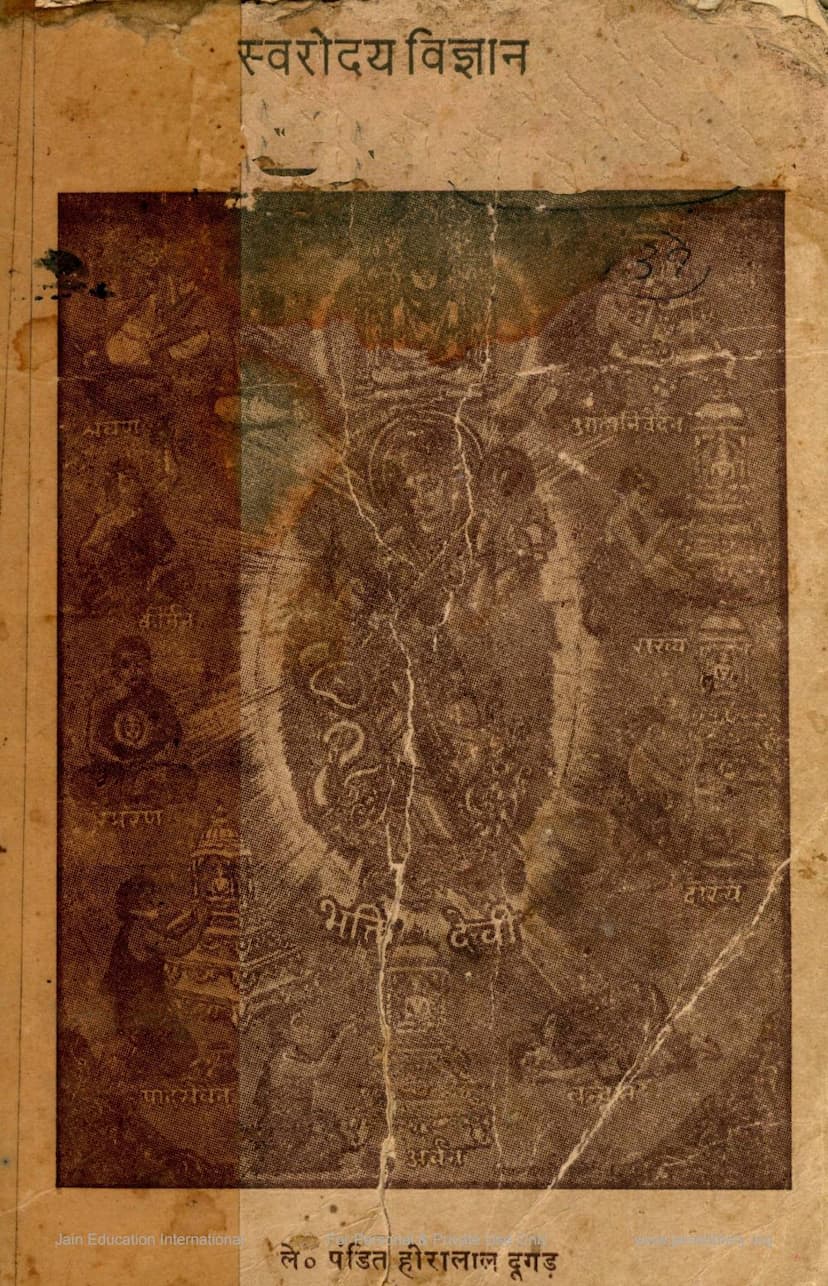Swaroday Vignan
Added to library: September 2, 2025

Summary
Here's a comprehensive summary of the Jain text "Swaroday Vigyan" by Hiralal Duggad, based on the provided pages:
Book Title: Swaroday Vigyan Author: Pandit Hiralal Duggad Publisher: Jain Sahitya Prakashan Mandir, Delhi Subject: Swaroday Vigyan (Knowledge of Breath/Respiration) focusing on predicting the future through breath patterns. Original Work: The book is a commentary and elaboration on "Swaroday Sar tatha Adhyatm Anubhav Yoga Prakash" authored by Yogiraj Shri Chidanand Ji Maharaj (Kapur Chand Ji).
Core Concept of Swaroday Vigyan: The book explains the science of Swaroday, which is the knowledge of predicting future events and understanding various aspects of life by observing the breath (swas-shwas) as it flows through the nostrils. This science is deeply connected with the subtle energies and elements within the body and their influence on external phenomena.
Key Themes and Content:
-
Foundation in Yoga and Jain Tradition: The text emphasizes that Swaroday is an integral part of Yoga, particularly Hatha Yoga, and is recognized as an important limb of the "Ashtang Nimitt" (Eight Limbs of Auspicious Science) in Jain tradition. It draws upon ancient Jain scriptures and the teachings of great Jain ascetics and yogis.
-
Author's Dedication and Effort: Pandit Hiralal Duggad is presented as a dedicated scholar who spent thirty years collecting and compiling this knowledge from ancient Jain manuscripts. He undertook arduous journeys, even in his advanced age (seventy years old), to promote Jain literature and ensure the publication of this important work. The publication faced significant challenges, including a fire at the press and scarcity of paper, highlighting the author's and publisher's commitment.
-
Swaroday as a Predictive Science: The book elaborates on how the flow of breath (swaroday) through the left (Chandra/Moon/Cool) and right (Surya/Sun/Hot) nostrils can reveal information about:
- Future Events: Predicting the success or failure of actions, outcomes of questions, weather patterns (rain/drought), success in ventures, outcomes of conflicts, and even personal fortunes (family, wealth).
- Health and Well-being: Identifying illnesses, understanding their causes (related to the balance of Vata, Pitta, Kapha), and suggesting remedies through breath control and other yogic practices.
- Personal Auspiciousness: Determining the suitability of certain times or breaths for specific activities.
- Character and Disposition: Understanding the nature of individuals based on their dominant breath.
-
Detailed Explanation of Breath Analysis:
- Breath Identification: Distinguishing between the "Chandra" (left nostril) and "Surya" (right nostril) breaths.
- Elements and Breath: Associating specific elements (Earth, Water, Fire, Air, Ether) with different breath flows, their colors, durations, and effects.
- Time and Breath: Analyzing the influence of day and night, lunar phases (Krishna Paksha, Shukla Paksha), and specific timings within the lunar month on breath patterns.
- Nadi System: Discussing the importance of Nadis (energy channels) in the body, with special mention of Ida, Pingala, and Sushumna, and how breath flows through them.
- The Five Elements (Tattvas): Detailed explanation of the characteristics, colors, seeds (beej), tastes, natures, and locations of the five elements (Prithvi, Jal, Agni, Vayu, Akash) as perceived through breath.
- Astrology and Breath: Connecting breath patterns with astrological positions, Nakshatras (stars), and specific planetary influences.
-
Practical Applications: The text provides methods for using Swaroday for:
- Questioning (Prashna): Answering specific questions by observing the breath at the moment of the query. This includes determining success, direction, and outcome of questions.
- Health Diagnosis and Remedies: Identifying diseases based on breath imbalances and suggesting methods for correction, often through Prana-yama and other yogic practices.
- Timing of Actions: Advising on the auspicious times to undertake various activities, from mundane tasks to significant life events.
- Understanding Time and Destiny: Using breath patterns to predict outcomes of the year (Varsh Phal) and life events.
-
Integration with Yoga and Jain Philosophy:
- Ashtang Yoga: The book relates Swaroday to the eight limbs of Yoga as described by Patanjali and also to the Jain concept of Ashtang Yoga.
- Prana-yama: Emphasis is placed on the importance of Prana-yama (breath control) as the foundation for Swaroday practice.
- Inner Transformation: Beyond mere prediction, the text hints at the transformative power of breath control for spiritual development, aligning with Jain principles of self-discipline and soul purification. It discusses concepts like Kundalini, Chakras, and various yogic postures (Asanas) and practices.
- Ethical Guidance: The book includes numerous ethical sayings and moral lessons, often attributed to Lord Mahavira, interspersed throughout the text, emphasizing righteous conduct alongside the scientific knowledge.
-
Commentary by Hiralal Duggad: Pandit Hiralal Duggad's contribution is to provide a detailed commentary (Artha-Vivechan) and explanation, making the original work of Shri Chidanand Ji Maharaj accessible to a wider audience. He clarifies complex concepts and offers insights into the practical application of Swaroday.
Overall Significance: "Swaroday Vigyan" by Hiralal Duggad serves as a bridge between ancient Jain wisdom and the practical science of breath prediction. It offers a comprehensive guide for understanding the profound connection between our breath, our inner state, and the unfolding of future events, all within a spiritual and ethical framework. The author's dedication to preserving and propagating this knowledge is a significant contribution to Jain literature.